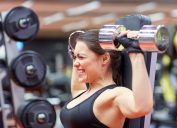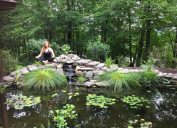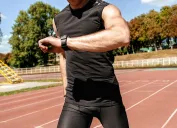The 15 Best Exercises for People Over 50
These are the best exercises for losing weight, maintaining balance, and building muscle after 50.
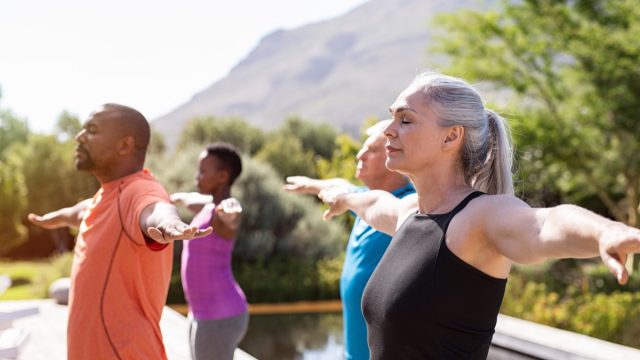
As you age, keeping up with a workout routine becomes more important than ever: It's not just about losing weight and building muscle after 50, but also about prevention. Starting each decade after age 30, you can experience as much as three to five percent of muscle loss, or sarcopenia. Not only that, but research shows that breaking a sweat a few times a week can help prevent cognitive decline, boost your metabolism, keep your blood sugar levels stable, and reduce your risk of death overall.
But when it comes to working out, should people over 50 focus more on cardio or strength? Unfortunately, the science isn't clear. The good news, however, is that incorporating more strength workouts that get your heart rate up can give you the best of both worlds.
"There is always a great debate between too much cardio versus too much strength work," says Chris Ryan, a founding trainer for at-home workout Mirror. "You want to be strong enough to pick up your grandkids and some grocery bags, but you also don't want to be winded going up a flight of stairs. Contrary to popular belief, you can get strong and build your lungs at the same time."
Ready to get your heart pumping? Here are the best exercises for losing weight, staying healthy, and building muscle over 50.
1
Planks

Core strength is the foundation of all strength, and as you get older, working on your abdominal muscles plays a big role in stabilizing your back and hips. That's why Tatiana Lampa, a NASM-certified corrective exercise specialist, votes planks as one of the best exercises to do.
How to do a forearm plank: Place your forearms on the floor with your shoulders directly over your elbows and your hands flat on the floor. You can also clasp your hands together to make a fist. Tightening your abs, shoulders, back, and glutes, extend your legs back into a plank and hold for 30 seconds. Make sure not to raise your butt or allow your stomach to fall by bracing your core and tucking your pelvis in. Slowly work your way to holding a plank for a full minute.
2
Bird Dogs

The bird dog is one of the best exercises you can do to improve your core strength and challenge your balance, Lampa says. As a signature yoga pose, bird dog forces you to engage your abdominal and back muscles and helps lengthen the posterior, reducing lower back pain. It also helps stabilize the spine and works the glute muscles every time you raise your leg.
How to do a bird dog: Start in a tabletop position with your knees bent hip distance apart and your shoulders directly over your wrists. Bracing your core and keeping your hips square, lift your right hand off the ground and extend your arm in front of you while extending your left leg out behind you, making sure to keep your weight centered. You should be able to draw a straight line from your hand to your heel. Hold this position for a few seconds before alternating hands and legs. Do three sets of ten reps.
3
Single Leg Toe Touches
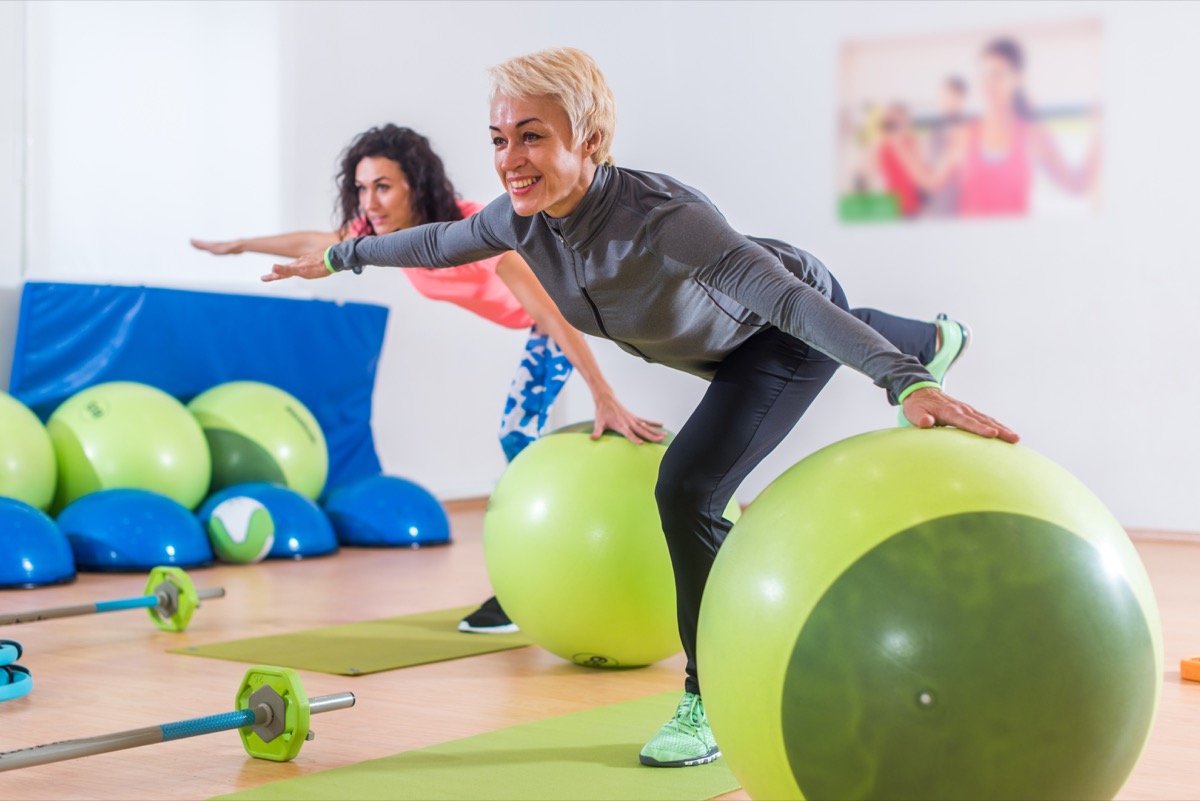
Older adults tend to experience joint pain and have issues with stability and posture. And since many of these problems stem from having poor balance, most 50-somethings can benefit from adding stability exercises into their workouts and strengthening the muscles around sensitive joints, says Ryan.
"Balance control movements—such as standing on a single leg for a few seconds with a wall assist and then progressing to a single leg stance without assistance—will work wonders for your balance control," he explains.
How to do a single leg toe touch: Stand your weight on your right foot while your left foot is slightly raised off the ground behind you. You can keep your arms down by your sides or raise them straight out to shoulder height. Bracing your core and keeping your spine long, bend your right knee and touch your right toes with your left hand. At the same time, extend your left leg behind you to help you balance. Then, press your right foot firmly on the ground to stand back up and bring your left foot to touch your right foot. This is one rep. Continue for four reps before switching legs. Do three sets of eight to twelve reps per leg.
4
Reverse Lunges
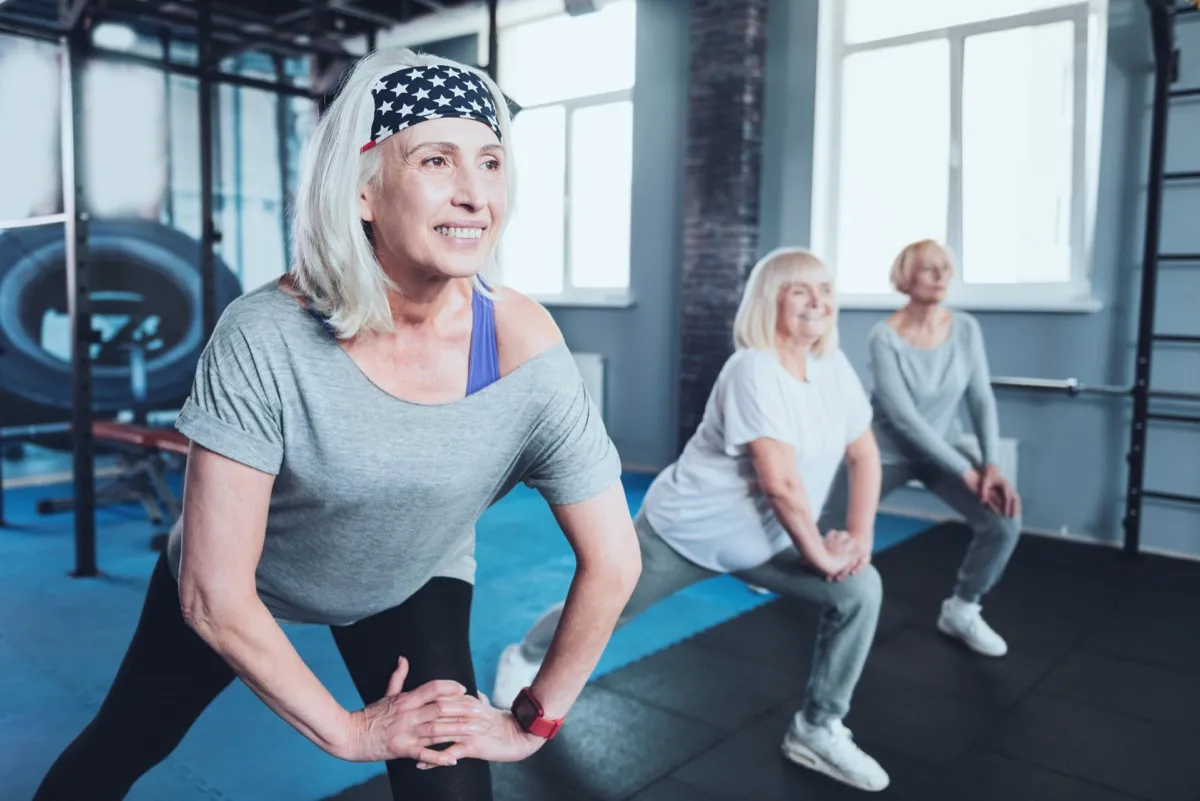
Lunges—both forward and backward ones—are basic functional movements that mimic walking and running. They "enforce balance and coordination and strengthen the legs," Lampa explains.
And if you want to kick this exercise up a notch, you can always use a step. "This exercise enforces the way you walk up stairs," Lampa notes. Once you nail down proper form, you can even carry a pair of dumbbells when doing the exercise to work your arms and legs.
How to do reverse lunges: Stand with your feet hip distance apart and your hands at your hips. Take a big step behind you with your right foot and lower your body toward the floor, forming two 90-degree angles with your front and back legs. Your left thigh should be parallel to the floor with your knee directly over your ankle. Stand back up by pressing your left foot firmly on the floor and bringing it back to the starting position. Repeat for three sets of twelve reps.
5
Box Squats

Box squats are a particularly great exercise for people over 50 because they enforce the very functional movement of sitting down and getting up from a seat. And the key to getting the most out of this exercise is playing with different tempos. Instead of counting one up-down motion as one rep, try following a 3:0:1 tempo, which involves three seconds during the eccentric phase (squatting down to touch the box with your butt) and one second during the concentric phase (standing up). This type of counting helps break down the movement and ensures proper form throughout the exercise.
If you're new to box squats, Ryan recommends performing them without weights to practice good form. As you get stronger, you can move on to using light dumbbells and a barbell.
How to do box squats: Set a box with the appropriate height behind you and stand with your feet slightly wider than hip distance apart in front of it. Engaging your glutes and core, slowly lower your butt back and down, keeping the weight in your heels. Once your butt touches the box, push your weight into your heels to stand back up. If you're using a pair of dumbbells, rest one end of the dumbbell lightly on each shoulder and hold them with your elbows facing forward. Do three sets of eight to twelve reps.
6
Deadlifts

Deadlifts are a great exercise for building muscle after 50. They target the hamstrings, the glutes, the lats, the traps, and the core.
"This exercise is by far my favorite because we pick things up from the ground constantly. If we're able to build the muscles, we decrease risk of injuries. They're also a great exercise for better posture," Lampa says. The deadlift is versatile, too, meaning you can do it with dumbbells, kettlebells, barbells, and even bands!
How to do a deadlift: Stand with your feet hip distance apart and place a kettlebell between the arches of your feet. Grip the kettlebell handle with both hands, making sure your shoulders are above your hips and your hips are above your knees. Engaging your core and keeping your back flat, push your shoulders back and down to activate your lats. Press your feet firmly into the ground and then lift the kettlebell up to stand. Bring the kettlebell back to the ground with a straight spine, never allowing your chest to fall past your hips. Do three sets of twelve reps.
7
Standing Shoulder Presses
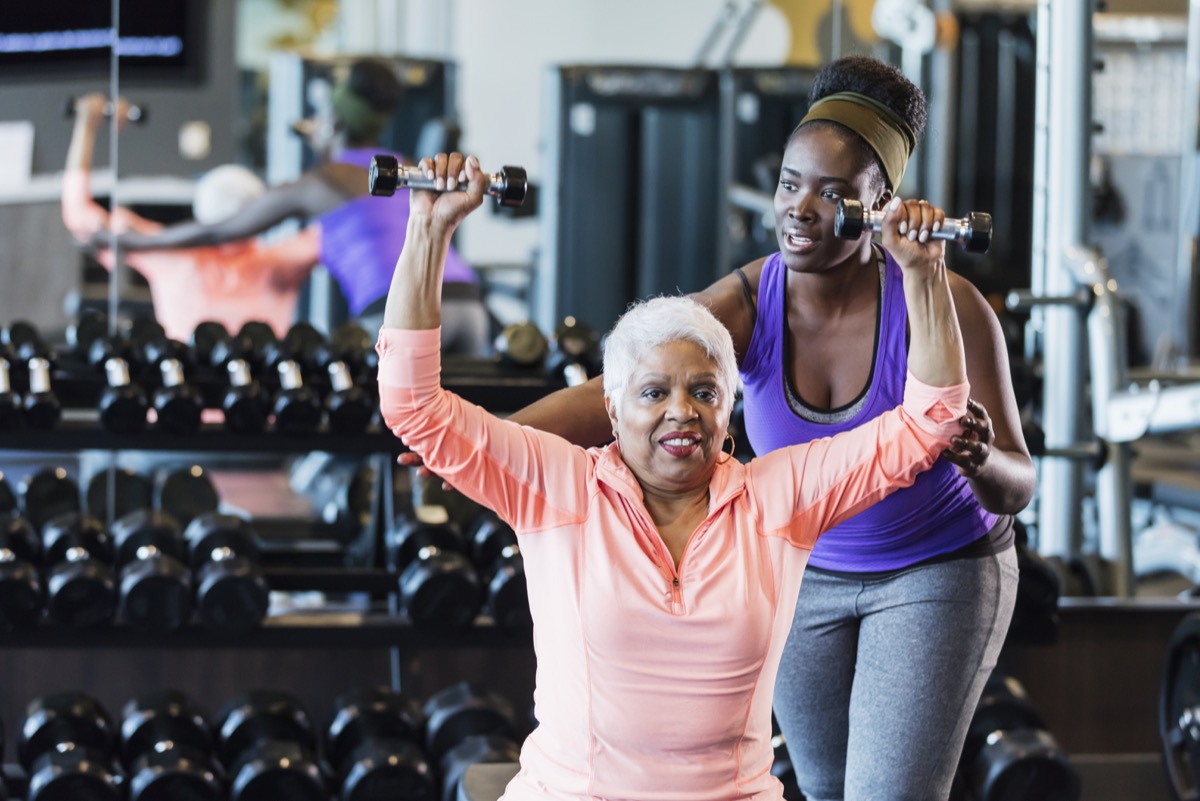
Standing shoulder presses are one of Ryan's go-to exercises for his clients over 50. This move helps with everyday tasks like lifting heavy boxes, carrying big bags, and even holding children and grandchildren overhead.
And not only do shoulder presses strengthen your shoulders and improve upper body mobility, but they also activate your core for an abs workout. "Try seated presses with light dumbbells before you do standing military presses with a barbell," Ryan suggests. "You can also do shoulder presses by standing on a resistance band and pressing the handles overhead."
How to do standing shoulder presses: Stand with your feet shoulder distance apart with a dumbbell in each hand. Raise the dumbbells to shoulder height with your arms forming 90-degree angles. Bracing your core, press the dumbbells together directly overhead with your biceps by your ears. Avoid arching your back or using your legs to drive the weights overhead. Bring the weights back down by your shoulders. Do three sets of eight to twelve reps.
8
Glute Bridges
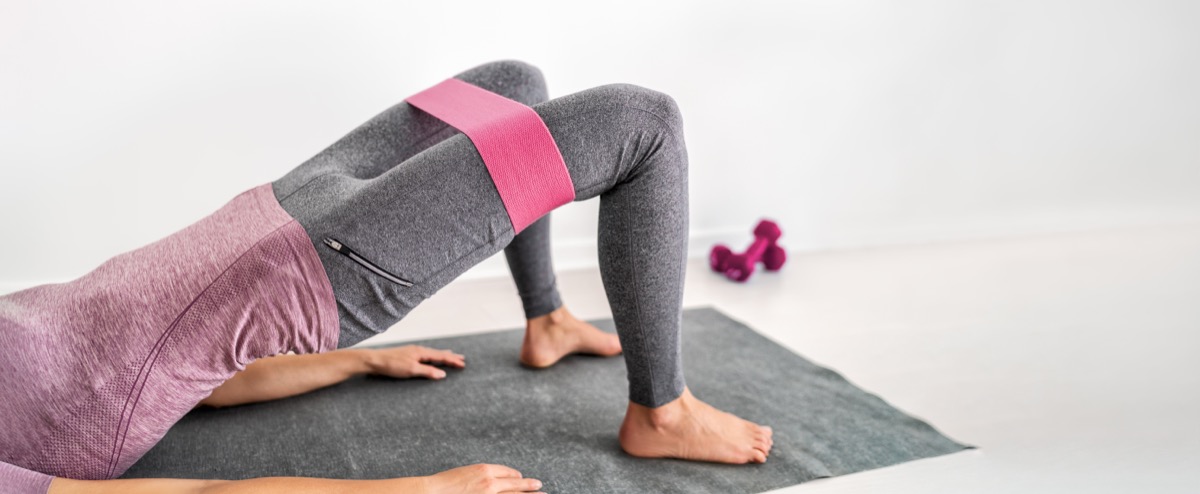
The pelvic floor muscles tend to weaken with age, with pregnancy, and with childbirth, and this can lead to incontinence and painful sex. Thankfully, doing exercises like glute bridges can strengthen the pelvic floor and glutes, thereby alleviating pain and eliminating any problems.
How to do glute bridges: Lie on your back with your feet flat on the floor and your hands at your sides. (The closer your feet are to your hips, the more challenging this exercise is.) Tightening your glutes, press your hips up toward the ceiling, lifting your butt off the floor. Avoid lifting your hips too high to prevent overextending your lower back. After a few seconds, lower your butt back down to the floor. To make this exercise more challenging, loop a mini resistance band around your legs just above your knees.
9
Barbell Hip Thrusts

Having strong glutes is not all about aesthetics (although having a sculpted backside is always a plus). Your glutes are the key to better sports performance and posture, and hip thrusts are the ultimate exercise for activating these power-building muscles.
"Work on hip thrusts with static tempo holds," Ryan suggests. "This will work wonders for your strength versus just cranking out a bunch of reps as quickly as possible."
How to do barbell hip thrusts: Sit on the ground with your feet flat on the floor and a bench behind you with your shoulder blades against it. Place a barbell directly over your hips. Pressing your feet on the ground and squeezing your glutes, drive your hips up off the floor into a bridge position. Your shoulders, hips, and knees should be in a straight line. Slowly lower your butt back down to the ground. Do three sets of twelve reps.
10
Pull-Ups

Pull-ups are definitely not a beginner move, and you deserve all the bragging rights if you can do one. However, the exercise shouldn't be rushed into, and Ryan recommends using machines and resistance bands for assistance. "Use bands or a pull-up machine to work on basic upper body pulling strength as well as grip strength safely," he says.
How to do a pull-up: Grip both hands around the pull-up bar and pull your shoulders down to activate your lats. Pull yourself up to bring your chin over the bar. Keep your legs together and engage your core to prevent arching your back and swaying your hips.
11
Seated Cable Rows
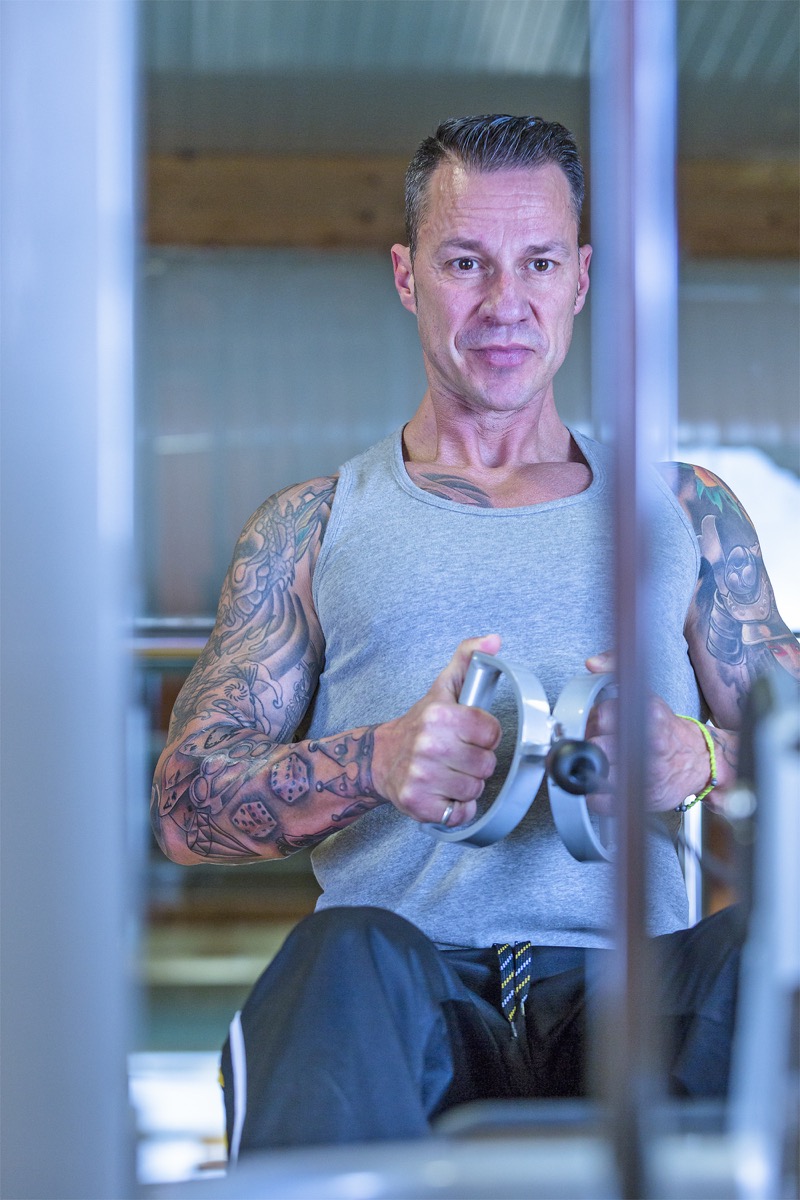
"Because humans spend more time than ever sitting down on the computer, watching TV, or working at a desk, they begin to slouch. It's super important to strengthen the back muscles to enforce good postural practice," Lampa explains. The seated row is a great way to correct the muscles and maintain good posture.
How to do seated rows: Sit down on the cable row machine and place your feet on the footbeds. Your knees should be slightly bent. Grip the handles with both hands, palms facing each other. Then, pull the handles towards your torso while keeping your elbows close to your sides, squeezing your back muscles. Hold this position for a second before returning the bar to the starting position. Do three sets of twelve reps.
12
Resistance Band Arm Rotations
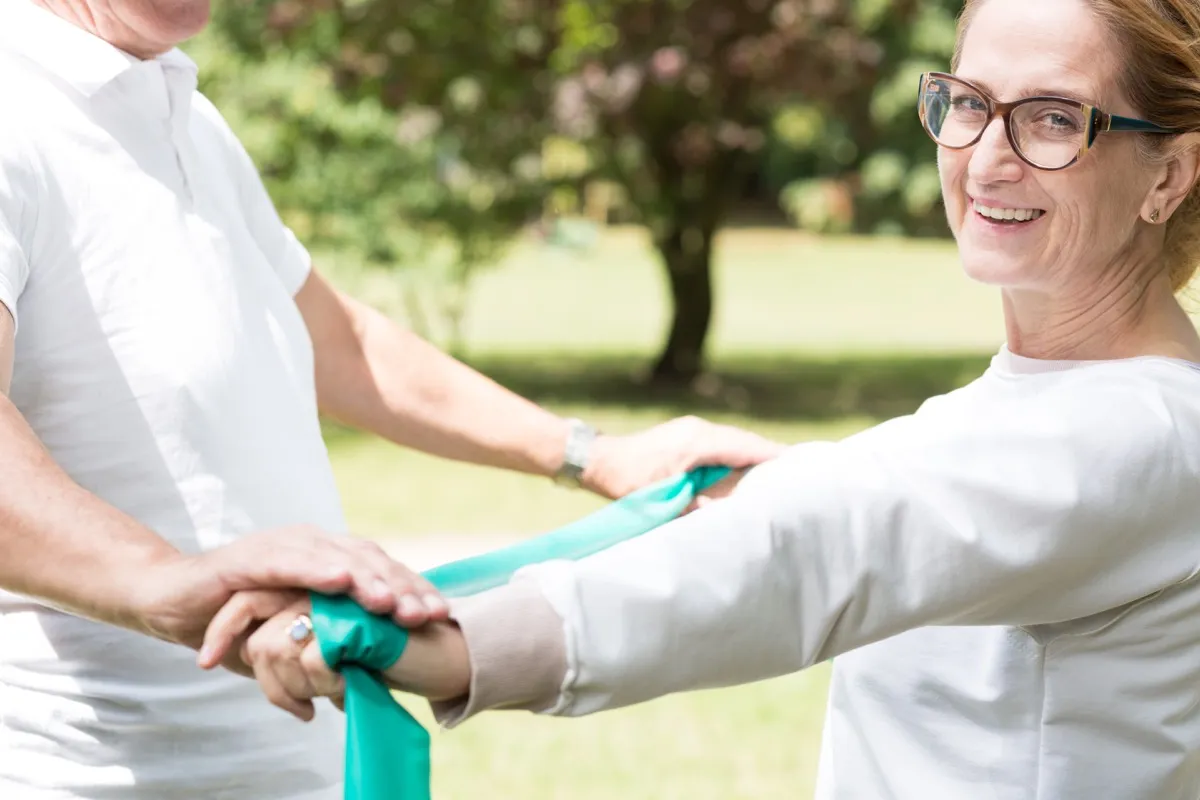
Resistance bands are ideal strength training tools for older adults because they build muscle without putting pressure on the joints. "Resistance band exercises are a great way to build strength for older people who are afraid that weights may put undue stress on their joints," Ryan says. "The tension is greatest when the muscle is engaged the most in the movement pattern."
One band exercise that helps with upper body mobility—something that tends to become limited as you get older—is arm rotations. "Think: the fly stroke and the back stroke in swimming while standing on the bands and holding them with your hands."
How to do resistance band arm rotations: Stand with both feet on a resistance band shoulder distance apart and hold one handle with each hand. Pull the bands apart toward your sides and rotate your arms forward and back. Keep your shoulders back and down as you do the exercise. Do three sets of twelve reps.
13
Cable Chest Press

The cable chest press machine is an excellent tool for strengthening the pecs as well as the delts and triceps, all of which are essential for pushing heavy doors and carrying out other everyday movements.
How to do a cable chest press: Stand one foot in front of the cable machine while holding a handle in each hand and with your arms at 90 degrees. Stagger your stance with one foot in front of the other for more stability. Keeping your torso square, extend your arms out to press the handles forward, bringing them together in front of you. Hold this position for a second before returning the handles to the starting position. Do three sets of twelve reps.
14
Farmer's Carry

Charlee Atkins, CSCS, founder of Le Sweat, recommends the farmer's carry for strengthening the core and arms. "Think about carrying bags of groceries up the stairs," she says. The exercise is also great for improving grip strength and targeting upper body muscles like the biceps and the shoulders.
How to do a farmer's carry: Stand with your feet shoulder distance apart and a kettlebell in each hand. Engage your core and keep your shoulders back and down to keep your chest lifted. Start walking forward while keeping your shoulders back. Continue walking for as long as you're able to before setting the kettlebells down.
15
Push-Ups
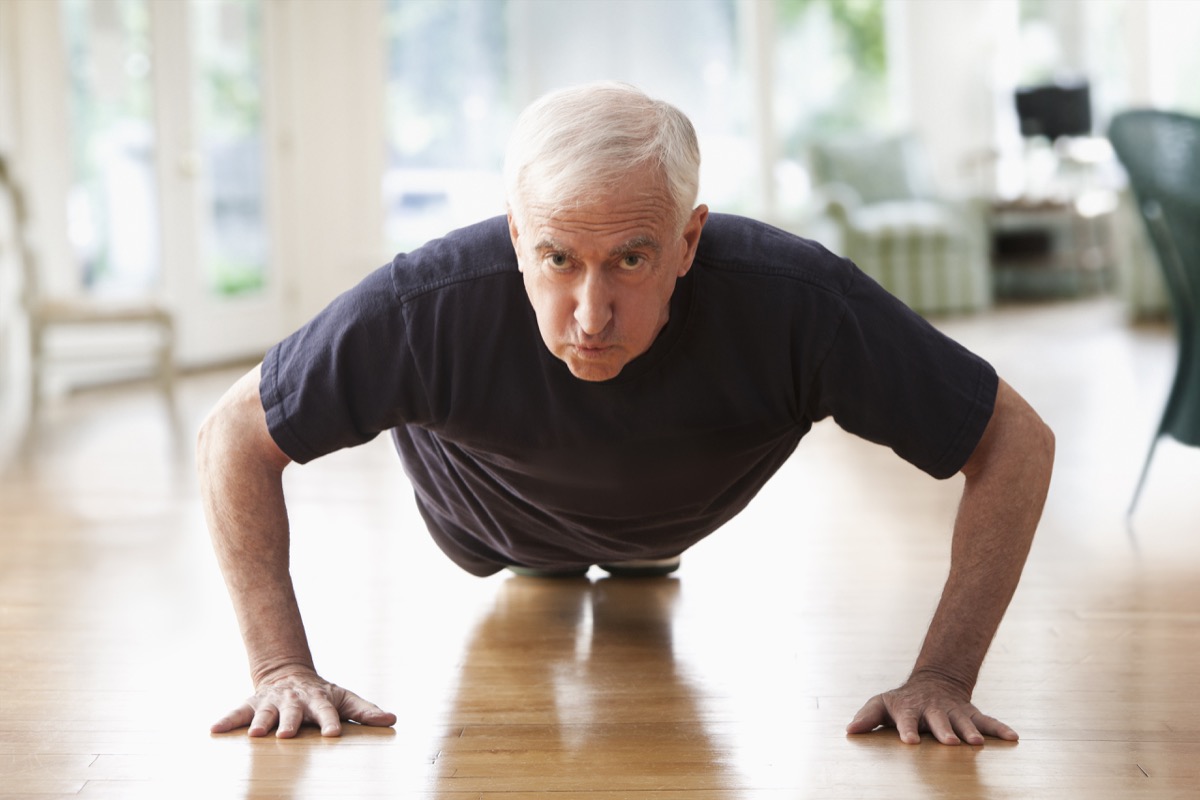
Whether you're over 50 or not, practicing push-and-pull exercises will help you with the functional movements you do every day. And specifically, the push-up is the perfect push motion move for building total body strength. "The ability to carry your own weight in the upper body allows you to push things, like shoveling snow," Atkins says.
How to do a push-up: Start in a high plank position with your shoulders directly over your wrists and your back, shoulders, core, and glutes tight. As you lower your body toward the ground, point your elbows back at 45 degrees and allow your chest to graze the ground. Pushing against your bodyweight, press your body back up without sinking your hips and abs.
